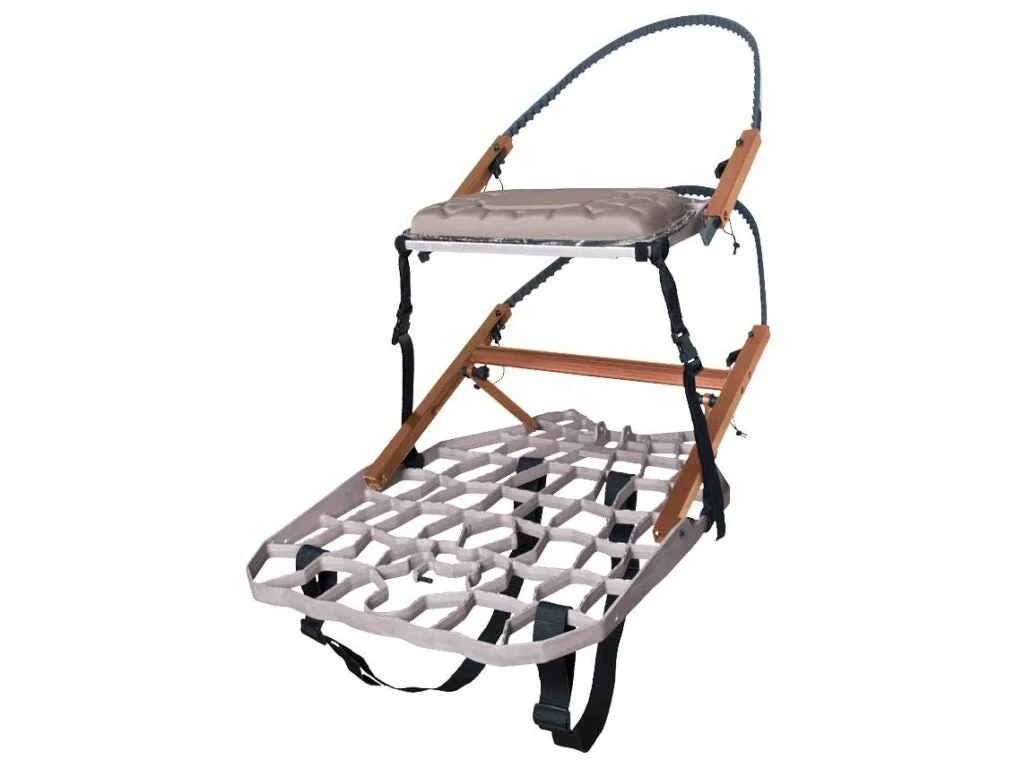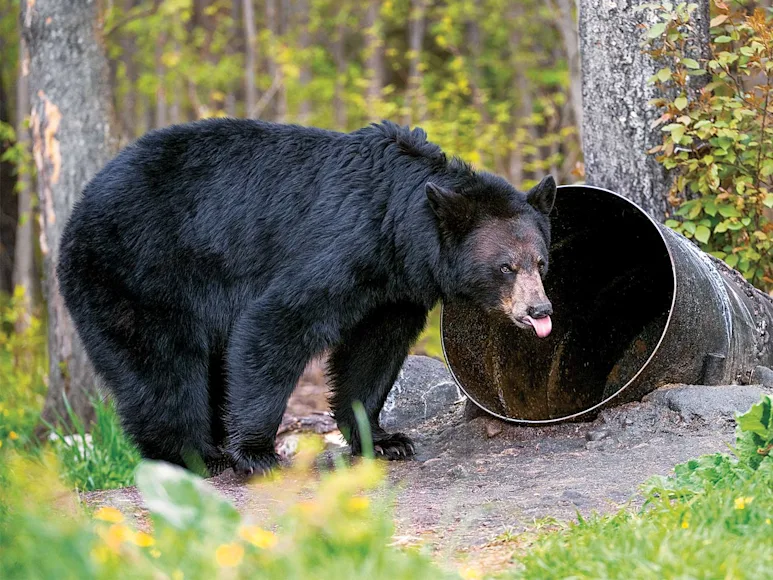_We may earn revenue from the products available on this page and participate in affiliate programs. Learn more ›
_
1. Go Dark
While it might seem counterintuitive to sit in an area with limited shooting lanes, bears are most comfortable in shaded, damp areas with plenty of undergrowth. Look for dark, dense forest with moss and mushrooms on the ground, rotten trees that break apart with a boot kick, and a water source within 75 to 100 yards. You’ll likely find plenty of natural materials to build a makeshift ground blind in such a place too.
2. Funnel Your Scent
On evening hunts, set up just downhill of your bait site because bears will typically approach from above, and you want falling late-day thermals to carry your scent away from them. This basic setup is even better if there’s a small drainage between you and the bait, or just behind you. Even the tiniest creek can create a trough that funnels those thermals downhill, making it even harder for a bear to smell you.
3. Spray Smoke
For an inexpensive attractant, mix Liquid Smoke with water in a spray bottle. Blanket your bait site with it. The smell attracts bears, and the odor sticks to their paws, so they create a scent trail for other bears to follow back to the bait.
4. Start Small
Many serious bowhunters maintain numerous bait sites at once. But if you’re hunting a new area, it’s better to have a few home-run sites rather than a bunch of mediocre ones. Once you get a better understanding of the bears in the area and which bait works best, then you can increase your number of sets.
**Read Next: A Twist on the Classic Cast-and-Blast Adventure
**
5. Quit Sweets
Some hunters swear that sweets make or break a bait site, but I’ve never found that to be the case. It doesn’t hurt to add something sugary, but fall bears enjoy a mix of foods, including proteins and veggies. Ask your local grocery store manager for discarded lettuce heads, watermelon, bread, sandwiches, fried chicken, and anything else that isn’t a doughnut or pastry.
6. Play Hard to Get
If you’re not using trail cameras, a good way to know when a bear has visited your bait (or to entice the animal to stay longer when it visits) is to make it work for its meal. If you’re using a barrel, stuff it full of large branches and sticks that the bear must remove before it can eat. Or cover a bait hole with tree limbs and logs too large for small critters like skunks, foxes, and raccoons to move. When you go to refresh a bait, if those obstructions have been moved, then you know a bear has likely claimed the site as its own.
Take a Stand

Lone Wolf Hand Climber Combo II • $390 Lone Wolf
Most good bait sites are thick with undergrowth, and it can be tough to see approaching bears. In those situations, consider using a treestand. I’m a fan of the Lone Wolf Hand Climber Combo II
because it’s easy to use, quiet, and very lightweight—a big consideration since there’s precious little flat ground where I hunt. The flexibility to hunt from any tree with a straight, limbless trunk and quickly adjust to changing wind directions is a big plus too. —B.R.

